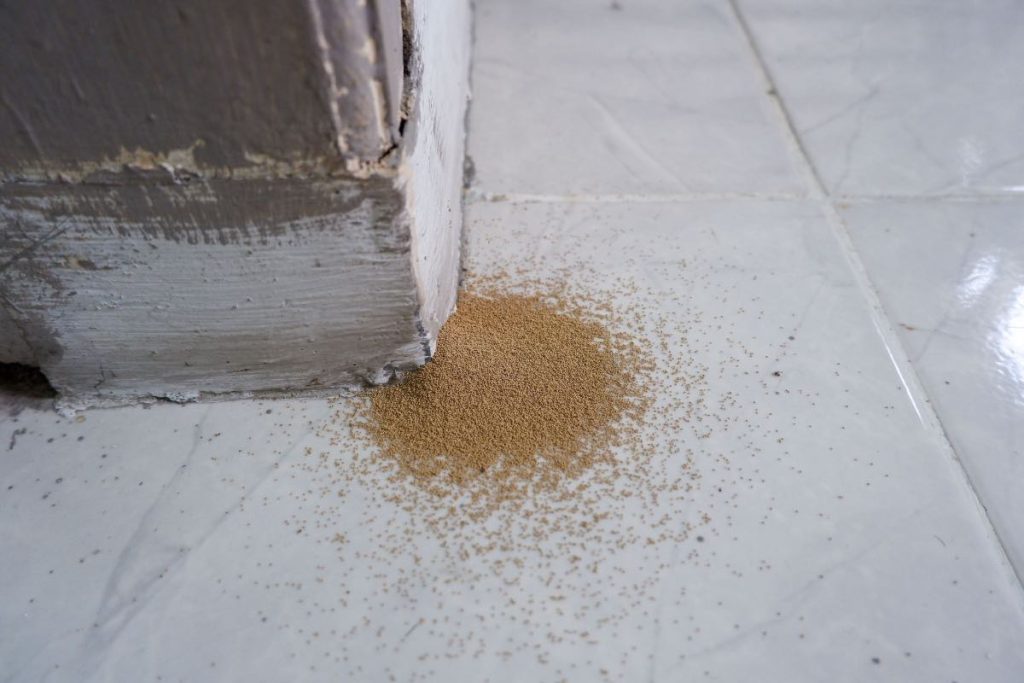Discovering signs of termite infestation in your ceiling can be a homeowner’s nightmare. In this comprehensive guide, we’ll delve into the subtle yet crucial indicators of termite activity in ceilings, empowering you to take prompt action and safeguard your home.

Deciphering the Clues: Signs of Termites in Ceiling Spaces Unveiled
Before we explore the intricacies of signs of termites in ceilings, let’s understand the gravity of termite infestations. Termites are notorious for their silent and destructive nature, often causing extensive damage before homeowners even realize their presence. Identifying signs early is key to mitigating the potential harm they can inflict on your home.
Spotlight on Infestation: Signs of Termites in Ceiling Spaces
Spotting signs of termites in your ceiling requires a keen eye and awareness of the subtle indicators that may go unnoticed by the untrained observer.
Unearthing the Indicators: Signs of Termites in Ceiling Spaces
- Hollow Sounds: Tap on your ceiling with a solid object. If you hear a hollow or papery sound, it could indicate termite damage. Termites consume wood from the inside, leaving a thin layer that creates this distinctive sound.
- Visible Tubes or Tunnels: Subterranean termites often create mud tubes for protection as they travel between their nest and a food source. Check for these pencil-sized tubes along walls, ceilings, or even hanging from the ceiling itself.
- Discarded Wings: Reproductive termites, known as swarmers, shed their wings after mating. If you find discarded wings on the floor or windowsills, it could signify a termite swarm, and their presence in ceilings is plausible.
- Wood Damage: Termites feast on wood, and ceilings are not exempt. Look for small holes, sagging, or buckling in the ceiling material, indicating potential termite activity.
- Frass or Termite Droppings: Termites produce tiny fecal pellets called frass. If you notice small piles of what looks like sawdust on the floor or surfaces beneath the ceiling, it may be a sign of termite presence.
Taking Action: Dealing with Signs of Termites in Ceiling Spaces
Once you’ve identified signs of termites in your ceiling, prompt and strategic action is crucial to prevent further damage and protect your home.
Strategies for Dealing with Termite Infestations in Ceilings
- Professional Inspection: Engage a licensed pest control professional to conduct a thorough inspection. Their expertise allows them to accurately assess the extent of the infestation and formulate an effective treatment plan.
- Localized Treatments: Depending on the severity of the infestation, localized treatments such as spot treatments or foam applications may be recommended. These aim to target specific areas of termite activity.
- Fumigation: In cases of extensive infestations, fumigation may be necessary. This involves treating the entire structure to eliminate termites comprehensively.
- Preventive Measures: Implement preventive measures to avoid future infestations. These may include regular inspections, addressing moisture issues, and applying termite-resistant treatments to vulnerable areas.
Read too: Cost To Skim Coat Ceiling
Conclusion: Safeguarding Your Home from the Silent Invaders
In conclusion, being vigilant and recognizing signs of termites in ceiling spaces is crucial for early intervention. Termites are relentless, and swift action is necessary to mitigate potential damage. By understanding the subtle indicators and taking decisive steps, homeowners can protect their homes from the silent invaders. Remember, seeking professional assistance is the most effective way to address termite infestations comprehensively and safeguard the structural integrity of your home.
